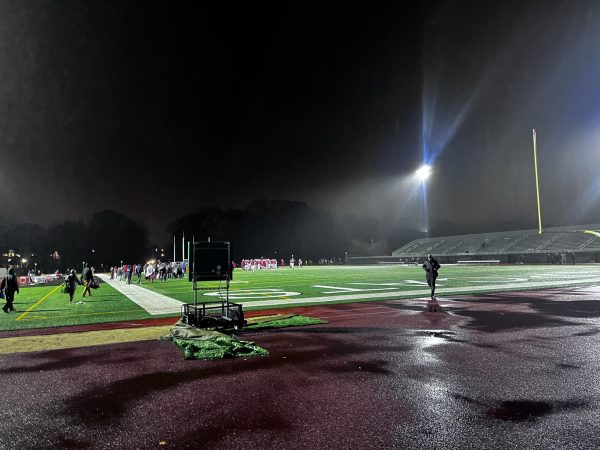Football Uniform Review
Hail To The… Black and White with Gold Trim? An Opinion On Social Media’s Negative Effects on Athletic Aesthetics
The St. Edward Eagles Football program is among the most recognizable high school programs in the nation. Winning five state titles since 2010, the Eagles have had more success in recent years than ever before, helping them gain national notoriety. The team is easily recognizable with their Packers-esque uniforms; The athletic gold pants and helmets with matching green and white striping, paired with the home forest and white away jerseys are the tangible legacy of St. Edward Football. This uniform is the brand.
The state of athletic uniforms, especially at the professional level, is in a peculiar and unprecedented place. The age of social media has marketing departments rethinking how their uniforms reflect a team’s brand. In the NFL, it has become en vogue to disregard team tradition to introduce monochromatic uniforms, often in black or white. These uniforms are uber-trendy, and get positive reactions on Twitter from mostly younger fans. The institution of the Color Rush program in the NFL ushered in a new era in sports aesthetics. Week 4’s Thursday Night Football matchup between the Bengals and Dolphins is indicative of this short-term-reaction-driven frenzy that NFL uniforms embody today.
The Bengals have worn orange tiger-striped helmets for nearly 40 years. This iconic element of their uniforms is the utmost expression of Cincinnati football. Yet, Thursday against the Dolphins, Cincy wore a uniform almost completely devoid of the color orange. Their “White Tiger” look featured all white helmets, jerseys, pants, and socks, trimmed in black (at home, no less). Any given Bengal in this outfit could be accurately described as an unfinished coloring book image of a football player. They looked lifeless and drab, adjectives that should never be used to describe Bengals uniforms, modern or not.
The Dolphins wore aqua tops for the primetime contest, which has been pretty procedural for Miami for the last five decades. This is true until it’s mentioned that the team wore aqua pants and socks along with these jerseys. The result was a sickly and gaudy aesthetic. I guess any lack of color in the Bengals outfits was overcompensated for with the Dolphins complete overkill of a traditional team color. One thing is certain: both teams looked anything other than their traditional branding, all in the pursuit of seeing fire-emoji reactions from fans on Twitter.
/cloudfront-us-east-1.images.arcpublishing.com/gray/PBZ2RJG6AFCLDEGRAXN7NLKK24.jpg)
Sports teams spend decades building identities. The St. Edward football program is rather unique among high school teams in that they have a singular, iconic uniform that they have used throughout their history. This branding should be sacred. Yet, last year, the Eagles introduced an all-black alternate uniform, which fails to include any of the team’s primary forest green color. St. Ed’s football has never worn black in school history. Players and students alike love the new uniform for its “sleek” or “clean” look. However, what many fail to understand is that uniforms are a form of visual history. There should be something mystical about the legacy of a program’s colors and uniforms, especially if they have a tenure that spans generations of coaches, players, and championships. The traditional green and gold uniforms connect every player that has ever been an Eagle. For that reason alone, it’s evident that St. Ed’s should respect their own legacy and branding enough to not succumb to the current trend-driven culture that mars sports aesthetics at the professional level.









